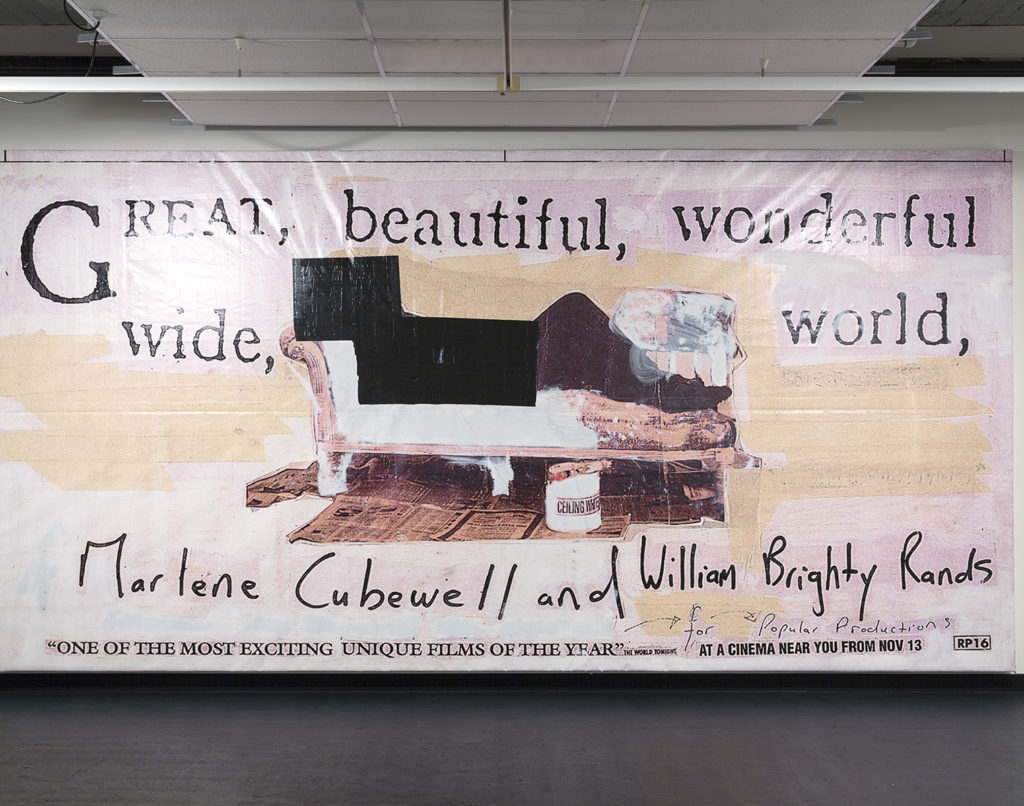ARTISTS Billy Apple, Peter Black, L. Budd, Gavin Chilcott, Julian Dashper, Michael Illingworth, Colin McCahon, John Reynolds CURATOR Robert Leonard
Peter McLeavey pioneered art dealing in New Zealand. After opening his gallery in Wellington in 1966, he has mounted over 500 shows, helping make the names of canonical New Zealand modernists, including Colin McCahon and Toss Woollaston, Gordon Walters and Milan Mrkusich. Although he was a tastemaker, McLeavey’s church would be broad. Over the years, a diversity of artists passed through the space.
McLeavey was an eccentric and a brand. As a Catholic, he presented his enterprise as a quasi-religious pursuit—an early gallery masthead featured an angel. From 1968 on, he operated out of two spartan rooms in Cuba Street, as if it were a monk’s cell. Over the years, his legend grew. In 2009, Luit Bieringa directed the biopic, The Man in the Hat, and, in 2013, Te Papa Press published Jill Trevelyan’s bestselling biography, Peter McLeavey: The Life and Times of a New Zealand Art Dealer.
Our show, McLeavey Sat Here, takes its name from a humble Colin McCahon drawing from 1975, which indicates where the dealer sat to take in the view while visiting the artist at Muriwai. It is accompanied by two 2011 John Reynolds drawings riffing on McCahon’s drawing, one superimposing the floor plan of McLeavey’s Cuba Street Gallery onto it, the other inserting road signs indicating the locations of his Gallery and home into it.
McLeavey would become synonymous with his space. The show includes Billy Apple’s Censure: The Given As an Art-Political Statement—five reliquaries that resulted from a show at McLeavey’s in 1979. In the show, Apple painted red a number of annoying architectural features that he considered distracting, requesting that they be removed to upgrade the space to a more neutral white-cube standard. Most of the elements McLeavey did remove, and Apple placed them in the frames with explanatory texts. Paradoxically, Apple moved these distractions centre stage, becoming the art.
In later years, McLeavey would revel in his Gallery’s personal quirks, becoming allergic to fixing his pockmarked walls, which bore the scars of every previous show. He did not aspire to be a neutral white-cube space. In 1992, L. Budd was installing her show at the Gallery, unsupervised. She doused McLeavey’s beloved chaise longue in her own signature white paint, incorporating it into her project. The chaise had long been a fixture in the gallery, a stand-in for the dealer himself, so this was like an attack on his person. Displeased, McLeavey closed Budd’s show before it opened and sent the chaise off for repair.
In response, as her contribution to the 1993 Artspace project Changing Signs, Budd installed a public billboard showing herself reclining on the blonded chaise, with her tin of white paint visible, flaunting her mischief. At some stage, the figure of the artist was redacted with black tape. The billboard is included in our show.
McLeavey was complicit in his myth making. In 1986, he commissioned two works to celebrate his fiftieth birthday. Peter Black produced 2 Brooklyn Terrace, a suite of fifteen photographs, documenting the dealer’s apartment, while Gavin Chilcott created a cycle of decorations celebrating his life. Our show includes Black’s photos and a Chilcott drawing reproducing a letter from McLeavey conveying his excitement about the ‘special project’.
In 2015, McLeavey died, aged 79. Managed by his daughter, Olivia, Peter McLeavey Gallery continues to represent Robin White, Richard Killeen, Bill Hammond, Peter Robinson, and Yvonne Todd. It remains Wellington’s longest-running dealer gallery.

























